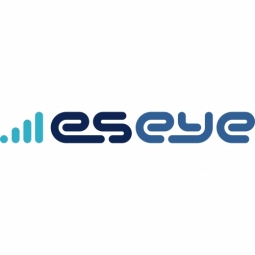下载PDF
Healthcare - Always Connected

技术
- 功能应用 - 远程监控系统
- 网络与连接 - 蜂窝
- 传感器 - 生物识别传感器
适用行业
- 医疗保健和医院
适用功能
- 商业运营
用例
- 远程病人监护
挑战
飞利浦 Motiva 是一个交互式远程医疗平台,经过专业设计,可以让患有慢性心力衰竭、糖尿病和慢性阻塞性肺病 (COPD) 等慢性病的人在家中舒适地进行监测。通过将数据直接发送给他们的医疗保健提供者,患者和护理人员都可以更灵活地管理病情。该系统能够监测体重、血压、血液中的氧饱和度,也可以用来回答问卷,系统直观,可以根据每个患者的个性化要求进行定制。飞利浦医疗保健需要一个完全托管的解决方案,为飞利浦 Motiva 提供可靠的家庭连接,从而连接到欧洲的多个网络。连接不良可能会导致多次工程访问和安装过程延迟,从而使飞利浦付出时间和金钱。
客户
飞利浦
关于客户
-
解决方案
Eseye 的 Multi - IMSI AnyNet SIM 是飞利浦 Motiva 的完美解决方案,可在多个关键地区提供可靠的多网络连接。与 Motiva 非常相似,AnyNet 具有灵活性和自由性,能够通过国内漫游和多个 IMSI 连接到多个网络,AnyNet 确保飞利浦 Motiva 保持可靠的连接,使患者数据能够从家中传输轻松地去医院和回来。 “Eseye 很自豪能与飞利浦 Motiva 合作。让患者能够在家中舒适地监测和管理病情,同时最大限度地提高他们的生活质量,其价值是巨大的。连接性至关重要,很高兴与飞利浦医疗保健团队合作提供解决方案。”
收集的数据
Electronic Medical Record, Health Parameters, Health Symptoms, Installation Diagnostics, Personal Medical
运营影响
相关案例.

Case Study
Hospital Inventory Management
The hospital supply chain team is responsible for ensuring that the right medical supplies are readily available to clinicians when and where needed, and to do so in the most efficient manner possible. However, many of the systems and processes in use at the cancer center for supply chain management were not best suited to support these goals. Barcoding technology, a commonly used method for inventory management of medical supplies, is labor intensive, time consuming, does not provide real-time visibility into inventory levels and can be prone to error. Consequently, the lack of accurate and real-time visibility into inventory levels across multiple supply rooms in multiple hospital facilities creates additional inefficiency in the system causing over-ordering, hoarding, and wasted supplies. Other sources of waste and cost were also identified as candidates for improvement. Existing systems and processes did not provide adequate security for high-cost inventory within the hospital, which was another driver of cost. A lack of visibility into expiration dates for supplies resulted in supplies being wasted due to past expiry dates. Storage of supplies was also a key consideration given the location of the cancer center’s facilities in a dense urban setting, where space is always at a premium. In order to address the challenges outlined above, the hospital sought a solution that would provide real-time inventory information with high levels of accuracy, reduce the level of manual effort required and enable data driven decision making to ensure that the right supplies were readily available to clinicians in the right location at the right time.

Case Study
Gas Pipeline Monitoring System for Hospitals
This system integrator focuses on providing centralized gas pipeline monitoring systems for hospitals. The service they provide makes it possible for hospitals to reduce both maintenance and labor costs. Since hospitals may not have an existing network suitable for this type of system, GPRS communication provides an easy and ready-to-use solution for remote, distributed monitoring systems System Requirements - GPRS communication - Seamless connection with SCADA software - Simple, front-end control capability - Expandable I/O channels - Combine AI, DI, and DO channels

Case Study
Driving Digital Transformations for Vitro Diagnostic Medical Devices
Diagnostic devices play a vital role in helping to improve healthcare delivery. In fact, an estimated 60 percent of the world’s medical decisions are made with support from in vitrodiagnostics (IVD) solutions, such as those provided by Roche Diagnostics, an industry leader. As the demand for medical diagnostic services grows rapidly in hospitals and clinics across China, so does the market for IVD solutions. In addition, the typically high cost of these diagnostic devices means that comprehensive post-sales services are needed. Wanteed to improve three portions of thr IVD:1. Remotely monitor and manage IVD devices as fixed assets.2. Optimizing device availability with predictive maintenance.3. Recommending the best IVD solution for a customer’s needs.

Case Study
HaemoCloud Global Blood Management System
1) Deliver a connected digital product system to protect and increase the differentiated value of Haemonetics blood and plasma solutions. 2) Improve patient outcomes by increasing the efficiency of blood supply flows. 3) Navigate and satisfy a complex web of global regulatory compliance requirements. 4) Reduce costly and labor-intensive maintenance procedures.

Case Study
Harnessing real-time data to give a holistic picture of patient health
Every day, vast quantities of data are collected about patients as they pass through health service organizations—from operational data such as treatment history and medications to physiological data captured by medical devices. The insights hidden within this treasure trove of data can be used to support more personalized treatments, more accurate diagnosis and more advanced preparative care. But since the information is generated faster than most organizations can consume it, unlocking the power of this big data can be a struggle. This type of predictive approach not only improves patient care—it also helps to reduce costs, because in the healthcare industry, prevention is almost always more cost-effective than treatment. However, collecting, analyzing and presenting these data-streams in a way that clinicians can easily understand can pose a significant technical challenge.






